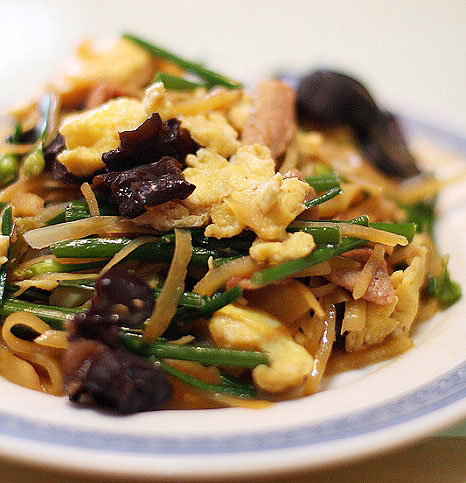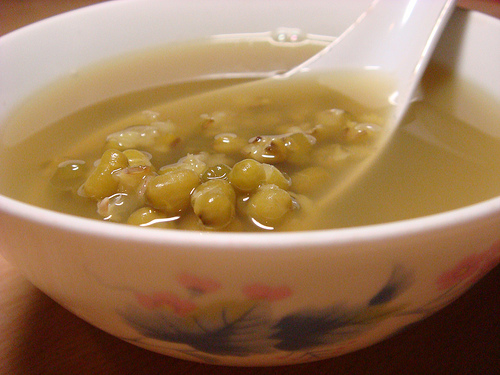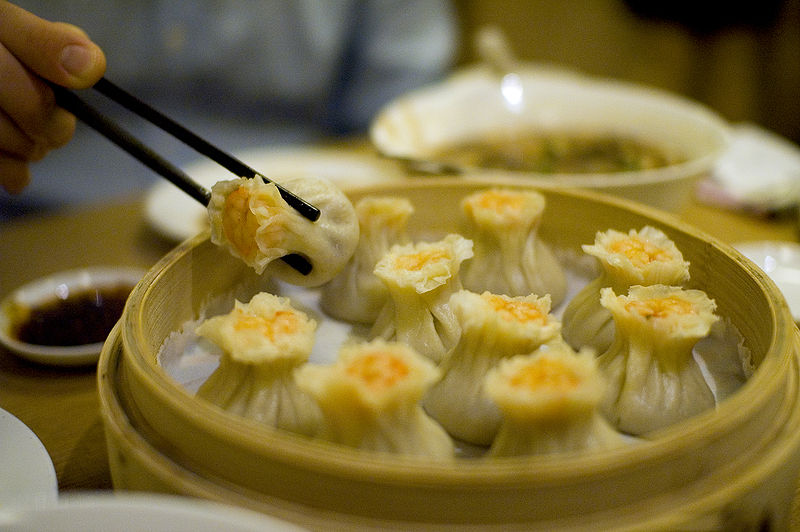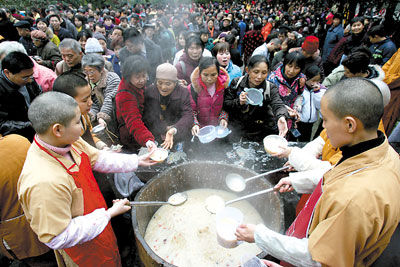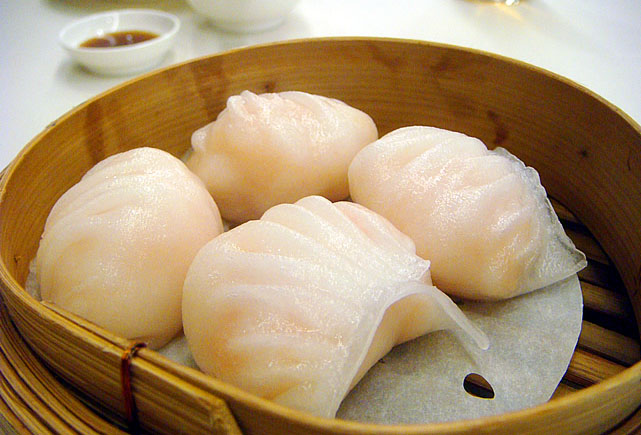Mushu Pork
Origins
Mushu Pork is a dish of northern Chinese origin, possibly believed to be originated from Shandong.
Thin strips of pork are either deep-fried or stir-fried, combined with a colorful array of exotic Chinese vegetables. A flavorful sauce and bits of scrambled egg make the dish complete.
According to various sources of origins, “mu shu” refers to flower blossoms, possibly cassia or from the olive tree. Nonetheless, there’s no doubt that the “woodsy” appearance of mu shu pork, with its combination of lily buds, cloud ears, and scrambled egg (meant to represent the yellow flower blossoms) is very appealing.
Servings
Mushu pork is served with a small dish of hoisin sauce and several warm, steamed, thin, white tortilla-like wrappers made of flour, called “mushu pancakes” (Chinese: 木须饼, pinyin: mù xū bǐng), “Mandarin pancakes”, or báo bǐng (薄饼, literally “thin pancakes”).
These are similar to those served with Peking Duck. The mushu pork is then wrapped in the moo shu pancakes, which are eaten by hand in the manner of a soft taco. The diner typically wraps his or her own pancakes, although waiters in Chinese restaurants are often willing to perform this function as a courtesy to diners who are unable to do so.
First, a small amount of hoisin sauce is spread onto the pancake, then a spoonful or two of mushu pork is placed in the center of the pancake. The bottom of the pancake is folded up slightly (to prevent the contents from falling out), and the pancake is either folded or wrapped from left to right, in the manner of a soft taco. Because the dish often contains a great deal of liquid, care must be taken that the pancake does not become soaked through and break during rolling or eating.
Like Chinese noodle dishes, mushu pork is not typically served with steamed white rice.
Making Mushu Pork at Home
It’s not surprising that many people think of mushu pork solely as a restaurant dish. But there are ways to make the process easier and less time consuming.
For one thing, both the pancakes and the mushu pork can be prepared ahead of time and frozen. If you’re not familiar with Chinese pancakes, crepes are another possibility. A popular Mexican variation is “Mu Shu wraps,” where the pork and vegetable filling is served in a warmed flour tortilla.
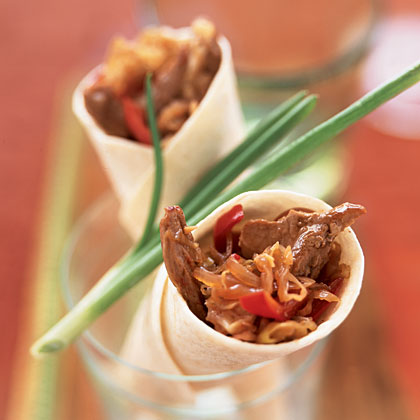
As for the meat, you don’t need to stick to pork. Recipes abound for Mu Shu chicken, ground beef, and turkey. You can even make a vegetarian version, substituting tofu or bean sprouts for the meat. Of course, there is still the trek down to the Asian supermarket to purchase lily buds and cloud ears – two items that generally aren’t available in most grocery stores. In a pinch you can substitute fresh mushrooms and a can of bamboo shoots, although the taste won’t be the same.
The Recipe:
Ingredients:
• 1/2 pound pork tenderloin
Marinade:
• 2 teaspoons dark soy sauce
• 2 teaspoons Shao-Hsing rice wine or dry sherry
• 1 teaspoon sugar
• 2 teaspoons cornstarch
Sauce:
• 3 tablespoons water
• 3 tablespoons low-sodium chicken broth
• 1 tablespoon soy sauce
• 2 teaspoons Shao-Hsing wine or dry sherry
• 1/2 teaspoon salt
• 1/2 teaspoon sesame oil
• 1 teaspoon cornstarch
Other:
• 4 dried black mushrooms
• 4 tablespoons dried cloud ears or wood ears
• 2 tablespoons dried lily buds
• 1/2 cup canned bamboo shoots
• 2 green onions
• 2 slices ginger
• 2 eggs
• 1/2 teaspoon salt
• 6 tablespoons oil for stir-frying, or as needed
• 1 teaspoon sesame oil
Preparation:
1. Cut the pork into thin strips. Add the marinade ingredients, adding the cornstarch last. Marinate the pork for 30 minutes.
Mix the sauce ingredients, whisking in the cornstarch last. Set aside.
2. Place the dried mushrooms, cloud ears or wood ears, and lily buds in separate bowls and soak for approximately 30 minutes. Squeeze out any excess water. Remove the stems from the black mushrooms and the hard tips from the lily buds. Cut into thin strips.
3. Rinse the bamboo shoots under warm running water to remove any tinny taste. Drain and cut into thin strips. Clean the green onion and cut into thirds. Cut the ginger into thin strips.
4. Lightly beat the eggs with the salt.
5. Heat the wok over medium-high to high heat. Add 2 tablespoons oil, swirling along the sides. When the oil is hot, add beaten eggs and scramble until they are quite firm. Remove the eggs from the wok. Clean out the wok.
6.Add 2 tablespoons oil. When the oil is hot, add the ginger and stir-fry until aromatic (about 30 seconds). Stir-fry until the pork changes color and is nearly cooked through. Remove from the wok.
7. Add 2 tablespoons oil. When the oil is hot, add the wood ears, lily buds, and mushrooms. Stir-fry for about 1 minute. Push up to the sides. Give the sauce a quick re-stir and add in the middle of the wok, stirring quickly to thicken. Add the other pork and scrambled egg back into the pan. Stir in the green onion. Mix everything together. Taste and add extra seasoning if desired. Remove from the heat and stir in the sesame oil.
8. To Serve: serve with mandarin crepes and hoisin sauce. Place pancake on a plate and brush with hoisin sauce. Add meat mixture and roll up the pancake.
*If desired, instead of stir-frying the green onion you can add it to the meat mixture at this point.
Vocabulary:
mù xū ròu
木 须 肉 Mu shu pork n.
lào bǐng
烙 饼 pancake n.

